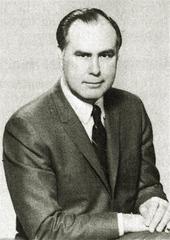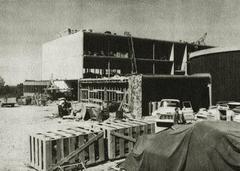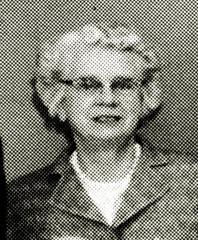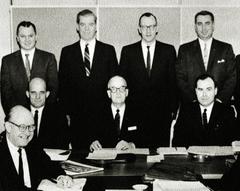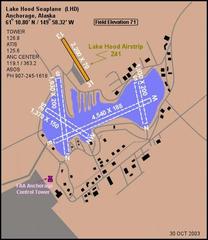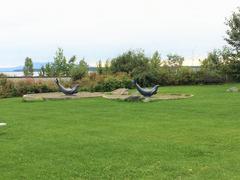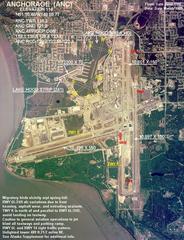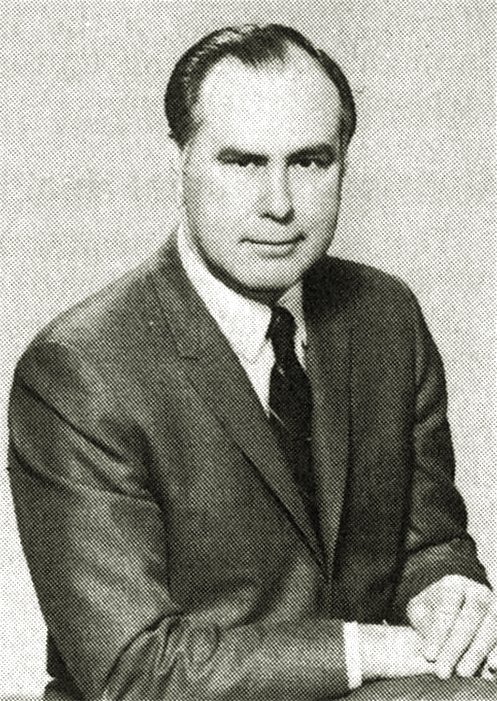
Alaska Pacific University Visiting Hours, Tickets, and Anchorage Historical Sites Guide
Date: 14/06/2025
Introduction to Alaska Pacific University
Nestled in Anchorage, Alaska, Alaska Pacific University (APU) is a distinguished institution recognized for its commitment to Indigenous heritage, experiential learning, and environmental stewardship. Founded in 1957 as Alaska Methodist University—just before Alaska achieved statehood—APU has evolved into a culturally significant liberal arts university dedicated to Indigenous education and community leadership. The Alaska Pacific University Monument, located on the university’s 170-acre wooded campus, stands as a tribute to its founders, celebrates its enduring mission, and honors its ongoing impact on higher education in Alaska.
This guide provides comprehensive visitor information on APU’s monument and campus, including visiting hours, admission policies, accessibility, guided tours, and special events. It also highlights APU’s academic strengths, Indigenous partnerships, and nearby Anchorage attractions such as the Alaska Native Heritage Center and Anchorage Museum. Whether you are interested in Alaska’s educational heritage, Indigenous cultures, or the natural beauty that surrounds Anchorage, this guide will help you plan a meaningful and memorable visit.
For official information, see the APU official website, APU Visitor Information page, and Anchorage Tourism site.
Table of Contents
- Introduction
- Historical Significance of Alaska Pacific University
- Visiting the Alaska Pacific University Monument
- Guided Tours and Educational Programs
- Cultural and Community Events
- Nearby Attractions
- Photography Tips
- Frequently Asked Questions (FAQ)
- Plan Your Visit
Historical Significance of Alaska Pacific University
APU’s origins as Alaska Methodist University reflect a vision of inclusive, experiential education rooted in Alaska’s unique context. Spearheaded by Peter Gordon Gould, an Unangax̂ (Aleut) leader and the first Alaska Native ordained as a Methodist minister, the institution was designed to foster Indigenous leadership and serve Alaska’s diverse communities. The transformation to Alaska Pacific University in 1978 broadened its mission while retaining a strong commitment to Indigenous education (Wikipedia). Over the decades, APU has hosted pivotal events, such as the Alaska Native Claims Settlement Act conference in 1971 at the Atwood Center, reinforcing its role in Alaska’s social and political history (Wikipedia).
Visiting the Alaska Pacific University Monument
Location and Directions
- Address: 4101 University Drive, Anchorage, Alaska
- Directions: From downtown Anchorage, take Tudor Road east and turn onto University Drive. Public transit routes 35 and 75 serve nearby stops.
- The campus features 170 acres of wooded land, offering scenic views of the Chugach Mountains and convenient access by car, bus, or bike.
Visiting Hours and Admission
- The Alaska Pacific University Monument is open year-round.
- Recommended visiting hours: 8:00 AM to 6:00 PM daily.
- Admission is free for all visitors.
- For special events or temporary restrictions, check the APU Visitor Information page.
Accessibility and Parking
- The monument and main campus pathways are wheelchair accessible.
- Designated parking spaces are available for visitors with disabilities.
- Service animals are welcome.
Guided Tours and Educational Programs
APU offers guided walking tours that include the monument, historic buildings such as Grant Hall and Gould Hall, and highlights of the campus’s environmental features. Tours provide insights into APU’s educational philosophy, Indigenous partnerships, and regional impact.
- Tours are available by appointment. To schedule, contact APU Visitor Services at [email protected] or call (907) 564-8200.
- Group tours for schools and organizations can be arranged.
Cultural and Community Events
The monument serves as a focal point for cultural celebrations, including Alaska Native Heritage Month, Earth Day events, storytelling sessions, traditional dance performances, and sustainability workshops. These events offer opportunities for visitors to engage with APU’s vibrant community and Indigenous traditions.
Academic Reputation and Distinctive Programs
APU is known for its hands-on, experiential learning, small class sizes, and personalized education. With around 578 students and an 8:1 student-to-faculty ratio, the university emphasizes collaboration with students, communities, and Tribal partners (University Living). Academic strengths include liberal arts, sciences, environmental studies, nursing, and public health. The nursing program is accredited by the ACEN and approved by the Alaska Board of Nursing, with a focus on culturally responsive, holistic care (APU Nursing).
APU is especially recognized for its environmental science, biology, and public health programs, and its research strengths in ecology, geography, geology, paleontology, and genetics (EduRank).
Indigenous Partnerships and Cultural Impact
Since 2016, APU’s partnership with the Alaska Native Tribal Health Consortium has advanced its goal to become a tribal college and integrate Indigenous perspectives into its curriculum (Wikipedia). Programs like the Alaska Indigenous Research Program (AKIRP) foster collaboration between Indigenous and Western worldviews to address health disparities among Alaska Native and American Indian peoples (ANTHC News). The Kellogg Campus in Palmer—a 700-acre working farm—serves as an environmental learning center and sustainability hub (Wikipedia).
National and Regional Rankings
APU has earned national recognition for contributions to social mobility, research, and public service. In 2024, Washington Monthly ranked APU 30th among U.S. bachelor-degree-focused colleges (Wikipedia). EduRank places APU 4424th globally, 1150th in the U.S., and highlights research strengths in environmental science, medicine, liberal arts, and biology (EduRank).
Athletics and Outdoor Culture
The Alaska Pacific University Nordic Ski Center (APUNSC), established in 1999, is a regional Olympic training center. The university has produced Olympic athletes, including Kikkan Randall, 2018 gold medalist (Wikipedia). The campus is a magnet for outdoor enthusiasts, offering recreational facilities and access to trails year-round.
Nearby Attractions
- Kellogg Campus (Palmer): 45 miles north; environmental learning center and working farm.
- Anchorage Museum: Features art, history, and science exhibits.
- Alaska Native Heritage Center: Immersive exhibits and performances celebrating Alaska Native cultures.
- Tony Knowles Coastal Trail: Scenic route for walking and biking, with views of Anchorage’s natural beauty.
- Chugach State Park: Offers hiking and recreational activities adjacent to campus.
Photography Tips
- Best lighting: Early morning or late afternoon, capturing the monument with the Chugach Mountains backdrop.
- Seasonal highlights: Snowy winters and vibrant fall foliage add visual interest.
Frequently Asked Questions (FAQ)
Q: Is there an admission fee to visit the Alaska Pacific University Monument?
A: No, access is free.
Q: Are guided tours available?
A: Yes, by appointment via Visitor Services.
Q: Is the monument accessible for people with disabilities?
A: Yes, the site and pathways are wheelchair accessible.
Q: What are the best times to visit?
A: Spring through fall offers pleasant weather; winter visits provide beautiful snowy landscapes.
Q: Where can I park?
A: Parking is available near the Atwood Center and main campus lots.
Plan Your Visit
Experience the history and cultural significance of Alaska Pacific University by planning your visit. For more information on tours, events, and current schedules, visit the APU Visitor Information page.

Alt text: Alaska Pacific University Monument with scenic Anchorage backdrop
Summary and Encouragement to Visit
Alaska Pacific University, with its historic monument and dynamic campus, offers a unique opportunity to engage with Alaska’s educational heritage and Indigenous cultures amid stunning natural surroundings. The monument not only honors visionary leaders like Peter Gordon Gould but also symbolizes APU’s ongoing commitment to inclusive education, community engagement, and environmental stewardship. With year-round access, free admission, guided tours, and vibrant community events, APU is a must-visit for anyone interested in Alaska’s history and future.
Enhance your visit by exploring nearby attractions such as the Alaska Native Heritage Center, Anchorage Museum, and Tony Knowles Coastal Trail. Be sure to check current schedules, book tours in advance, and review official resources for the best experience.
For the most up-to-date details, tour bookings, and event information, consult the Alaska Pacific University website and Anchorage Tourism portal.
References
- Alaska Pacific University Official Site, 2025
- APU Visitor Information, 2025
- Anchorage Tourism, 2025
- Wikipedia: Alaska Pacific University
- EduRank: Alaska Pacific University Rankings, 2024
- Alaska Native Tribal Health Consortium News: Alaska Indigenous Research Program 2025
- University Living: Top Universities in Alaska Admission Guide, 2024
